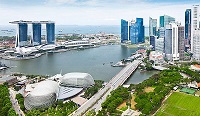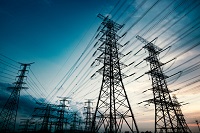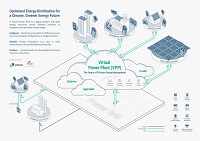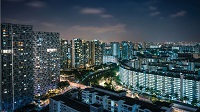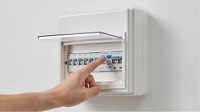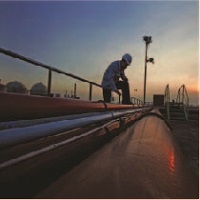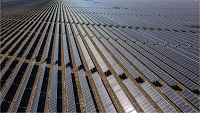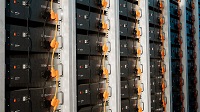For more information, please refer to:
Dr Amy Khor, Senior Parliamentary Secretary for the Ministry of Environment and Water Resources,
Distinguished Speakers and Guests,
Ladies and Gentlemen,
Good morning and a warm welcome to the inaugural Clean Energy Expo Asia 2009.
Energy has always been an essential aspect of economic growth. While the global downturn has dampened the outlook for the energy market over the past year, energy demand is likely to trend growth once a firm global economic recovery takes root.
But while we expect energy demand to pick up again post-recession, the conditions under which it will be growing will be different. With energy security and climate change becoming very real concerns, we are witnessing increasing global impetus for the diversification of energy sources towards low carbon options, in particular, clean and renewable energy.
Worldwide Push Towards Clean Energy
Governments around the world have pledged significant resources to make the push towards clean energy. US President Barack Obama announced earlier this year that close to half a billion US dollars would be set aside under the American Reinvestment and Recovery Act to expand and accelerate the development and adoption of geothermal and solar energy throughout the United States. More recently, the US Administration announced US$3.4 billion in grant funding for the deployment of smart meters in the US. Such infrastructure will facilitate the integration of renewable energy sources into the grid and improve efficiency with which Americans use electricity.
In Asia, China is leading the charge towards clean energy. In 2008, China made US$15.6 billion worth of clean energy investments, the highest in the region, mostly in new wind projects and biomass plants. Around Asia and in other parts of the world, countries are developing programmes for clean energy research and deployment to capitalise on the rising adoption of clean energy solutions.
Support For Clean Energy Research
Cognisant of the potential for clean energy solutions to address the twin challenges of climate change and energy security and to drive economic growth, Singapore has made the development of the clean energy sector one of our key priorities. Beyond leveraging on our existing strengths in the energy industry and capabilities in research and development (R&D), we have put in place new initiatives to support clean energy research, development and deployment.
Growing Energy R&D Capabilities
In terms of initiatives to support energy R&D, the Energy Market Authority (EMA) has launched an S$25 million Energy Research Development Fund (ERDF) that is aimed at creating new capabilities in Singapore that best serve our energy needs.
The Clean Energy Programme Office (CEPO), which is responsible for planning and executing strategies to develop
Singapore into a global clean energy hub, has several schemes in place, amounting to $170 million.
The Agency for Science Technology and Research (A*Star) an our institutes of higher learning have also established various energy research programmes and centres with a focus on clean energy technologies such as fuel cells, biofuels and next generation solar photovoltaic (PV) technology. These initiatives are aimed at supporting the continued growth of Singapore’s energy industries and the development of Singapore into a regional centre for clean energy research.
Support For Clean Energy Research as a "Living Lab"
In addition to conventional laboratory research, EMA is working with industry partners and other government stakeholders to make Singapore a "living lab" for sustainable energy solutions and to further capitalise on opportunities in the energy sector.
The aim is to facilitate testing of close-to-market products in a real environment with human activities, so as to create more value in the research work and enhance the marketability of solutions.
The test-bedding concept also allows an integrated approach to evaluate product capabilities. For instance, rather than simply deploying standalone technologies such as a solar PV system on a roof, the solutions may be integrated within a larger system with other distributed energy resources, thereby facilitating system level solutions with the power grid.
Several factors make Singapore an ideal location for such test beds. Firstly, our urban environment and infrastructure make it easy and fast to roll out new concepts. Secondly, we have a ready audience to test system-level solutions under real supply and demand scenarios. Thirdly, our skilled workforce and advanced engineering sectors ensure that necessary manpower and technical support are available for pilot projects.
We welcome industry players to test out their solutions in a real-life environment, learn from their experience, and use Singapore as a springboard to market these solutions overseas. To facilitate this, Singapore has initiated several projects.
Development of an Electricity Infrastructure with Clean & Renewable Energy for Pulau Ubin
One of the test-bedding projects that EMA has recently embarked on is the Development of an Electricity Infrastructure with Clean & Renewable Energy for Pulau Ubin.
Those of you who are familiar with Singapore would know that Pulau Ubin is a small offshore island off the northeast coast of Singapore. It has land area of around 10 km2 and is home to about 100 villagers, a few small businesses, resorts and training camps. There is no power grid to supply electricity to the local communities in a centralised way. Instead, they rely on their own diesel generators for electricity, which is pollutive and unreliable.
Earlier this year, EMA engaged consultants to study the feasibility of introducing clean and renewable energy sources on the island to replace the diesel generators. One of the key recommendations of the consultancy study is to develop 5 interconnected micro-grids serving the north, south, east, west and jetty regions of the island. The micro-grids will rely on renewable energy such as solar PV, concentrated solar power, micro-wind turbines, and biofuels. The study had further recommended that we implement the micro-grid at the jetty area first, as this is where most of the businesses and residents on the island are located.
Following from these findings, we are planning for the construction of a small-scale, micro-grid deployed in the jetty area powered by different clean and renewable energy technologies. As many of such technologies are weather-dependent, it is necessary to have an intelligent control system in the micro-grid to ensure the reliability and quality of electricity supply. Through this intelligent micro-grid, renewable energy solutions can be integrated with other technologies and tested on a systems level. There is also potential for such a micro-grid project to be exported and implemented in other parts of the region, for instance, in rural or off-grid electrification projects.
To take this project forward, I am happy to announce that EMA will launch a call for an Expression of Interest (EOI) on 20 November. Specifically, we will invite companies to submit proposals to design, build and operate an Intelligent Micro-grid with Clean and Renewable Energy Technologies in a designated area on the island. More details will be posted on EMA website and through the Government Electronic Business (GeBIZ) portal.
Our Search for Innovation
As EMA evolves into its new role of energy industry planner, promoter, and developer, we will continue to seek similar opportunities in developing sustainable energy solutions as part of our plan to grow Singapore’s energy industry. We are open to new ideas and to working closely with our industry and government partners to forge a progressive energy landscape for sustained growth.
Conclusion
This is an exciting point in time for the clean energy industry, especially for Asia. With its growing industries and expanding urban populations, clean energy can play a part in addressing climate change challenges, enhancing energy security, and driving economic growth. Singapore has begun the journey to develop its clean energy capabilities and landscape. I encourage potential partners to join us to participate in Singapore’s initiatives and grow together.
Thank you.
